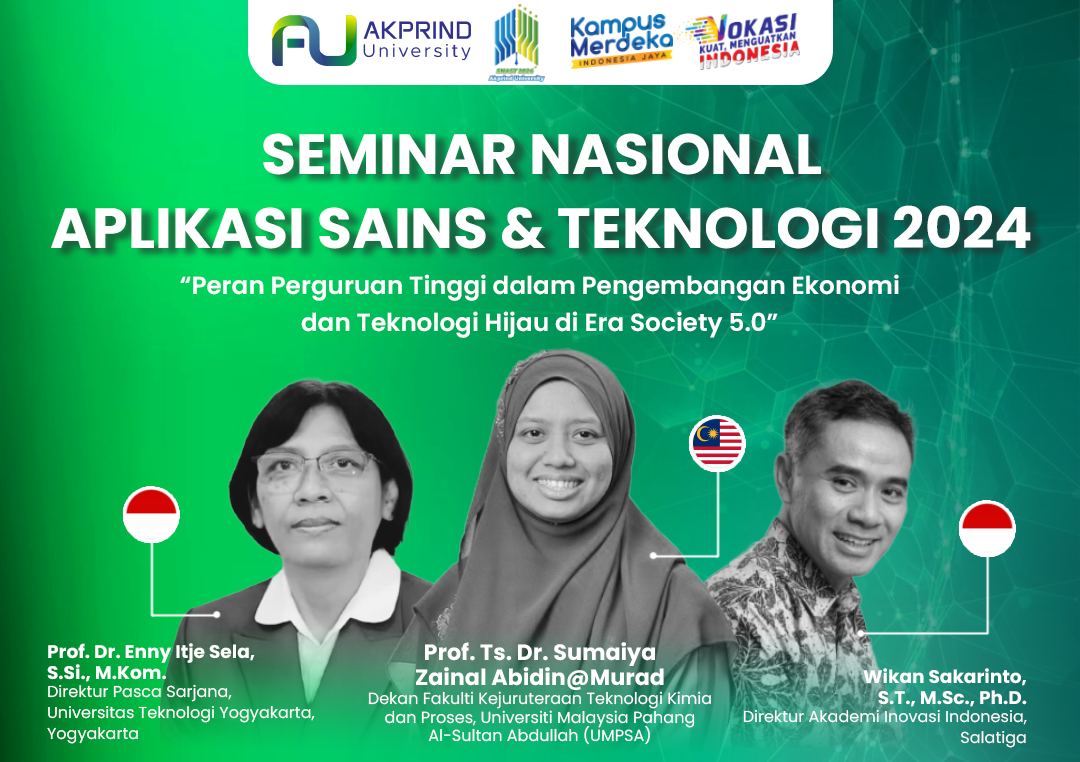MODEL PENERIMAAN E-LEARNING DI MAHASISWA S1 AKUNTANSI
DOI:
https://doi.org/10.34151/prosidingsnast.v1i1.5075Keywords:
e-learning, Diffusion of Innovation, Mahasiswa akuntansi, Pendidikan tinggi, Technology Acceptance Model.Abstract
Penelitian ini bertujuan untuk menganalisis penerimaan e-learning di kalangan mahasiswa Program Studi S1 Akuntansi Universitas Bengkulu dengan menggunakan model Technology Acceptance Model (TAM) dan Diffusion of Innovation (DOI). Data dikumpulkan melalui kuesioner yang disebarkan kepada mahasiswa via Googleform dan dianalisis menggunakan regresi linear berganda. Hasil penelitian menunjukkan bahwa persepsi kegunaan (perceived usefulness) dan persepsi kemudahan penggunaan (perceived ease of use) memiliki pengaruh signifikan terhadap penerimaan e-learning. Selain itu, keunggulan relatif (relative advantage) dan kompatibilitas (compatibility) juga berpengaruh positif terhadap sikap mahasiswa dalam mengadopsi e-learning. Namun, kompleksitas tidak menunjukkan pengaruh signifikan terhadap penerimaan. Temuan ini memberikan implikasi penting bagi pengembangan platform e-learning, kebijakan pendidikan, dan strategi pengajaran di pendidikan tinggi. Dengan memahami faktor-faktor yang memengaruhi adopsi e-learning, institusi pendidikan dapat menciptakan lingkungan e-learning yang lebih efektif dan ramah pengguna serta lebih sesuai dengan kebutuhan mahasiswa. Penelitian ini menawarkan wawasan berharga untuk meningkatkan desain dan implementasi e-learning dalam konteks pendidikan tinggi
References
Abe, T., Yudhana, A., & Riadi, I. (2020). Analisis Penerimaan Terhadap Penerapan Sistem E-Learning Menggunakan Technology Acceptance Model (TAM). Jurnal Media Informatika Budidarma, 4(4), 1–6. https://doi.org/10.30865/mib.v4i4.2212
Adedoyin, O. B., & Soykan, E. (2023). Covid-19 pandemic and online learning: the challenges and opportunities. Interactive Learning Environments, 31(2), 863–875. https://doi.org/10.1080/10494820.2020.1813180
Davis, D., F., Bagozzi, R. P., & Warshaw, P. R. (1989). User Acceptance of Computer Technology : A Comparison of Two Theoretical Models Author. Management Science, 35(8), 982–1003.
Davis, F. D. (1989). Perceived usefulness, perceived ease of use, and user acceptance of information technology. MIS Quarterly: Management Information Systems, 13(3), 319–339. https://doi.org/10.2307/249008
Dhawan, S. (2020). Online Learning: A Panacea in the Time of COVID-19 Crisis. Journal of Educational Technology Systems, 49(1), 5–22. https://doi.org/10.1177/0047239520934018
Hair Jr, J. F., Black, W. C., Babin, B. J., & Anderson, R. E. (2019). Multivariate Data Analysis (Eight Edit). Cengange. https://doi.org/10.1002/9781119409137.ch4
Huang, F., Teo, T., & Zhou, M. (2020). Chinese students’ intentions to use the Internet-based technology for learning. Educational Technology Research and Development, 68(1), 575–591. https://doi.org/10.1007/s11423-019-09695-y
Idkhan, A. M., & Idris, M. M. (2023). The Impact of User Satisfaction in the Use of E-Learning Systems in Higher Education: A CB-SEM Approach. International Journal of Environment, Engineering and Education, 5(3), 100–110. https://doi.org/10.55151/IJEEDU.V5I3.91
Ketchen, D. J. (2013). A Primer on Partial Least Squares Structural Equation Modeling. Long Range Planning, 46(1–2), 184–185. https://doi.org/10.1016/j.lrp.2013.01.002
Mad, S., Omar, N. A., Sarudin, E. S., & Aziz, N. H. (2020). Perception and Intention to use E-learning from Students’ Point of View- An Evidence from Malaysia Local University. Journal of Computing Research and Innovation, 5(2), 11–20. https://doi.org/10.24191/jcrinn.v5i2.163
Mensah, I. K., Zeng, G., Luo, C., Lu, M., & Xiao, Z. W. (2022). Exploring the E-Learning Adoption Intentions of College Students Amidst the COVID-19 Epidemic Outbreak in China. SAGE Open, 12(2). https://doi.org/10.1177/21582440221086629/ASSET/IMAGES/LARGE/10.1177_21582440221086629-FIG3.JPEG
Moore, G. C., & Benbasat, I. (1991). Development of an Instrument to Measure the Perceptions of Adopting an Information Technology Innovation. Information Systems Research, 2(3), 192–222. https://doi.org/10.1287/isre.2.3.192
Potter, B. N., & Johnston, C. G. (2006). The effect of interactive on-line learning systems on student learning outcomes in accounting. Journal of Accounting Education, 24(1), 16–34. https://doi.org/10.1016/j.jaccedu.2006.04.003
Puniatmaja, G. A., Parwati, N. N., Tegeh, I. M., & Sudatha, I. G. W. (2024). The Effect of E-learning and Students’ Digital Literacy towards Their Learning Outcomes. Pegem Journal of Education and Instruction, 14(1), 348–356. https://doi.org/10.47750/PEGEGOG.14.01.39
Rahayu, F. S., Budiyanto, D., & Palyama, D. (2017). Analisis Penerimaan E-Learning Menggunakan Technology Acceptance Model (TAM) (Studi Kasus: Universitas Atmajaya Yogyakarta). Jurnal Terapan Teknologi Informasi, 1(2), 87–98. https://doi.org/10.21460/JUTEI.2017.12.20
Rogers, E. M. (1983). Diffusion of Innovation. In The Free Press.
Venkatesh, V., & Davis, F. D. (2000). A theoretical extension of the technology acceptance model: Four longitudinal field studies. Management Science; Linthicum, 46(2), 186–204. https://search.proquest.com/docview/213174901?pq-origsite=summon
Venkatesh, V., Morris, M. G., Davis, G. B., & Fred D. Davis Reviewed. (2003). Unusual formations of superoxo heptaoxomolybdates from peroxo molybdates. User Acceptance of Information Technology: Toward a Unified View, 27(3), 425–478. https://doi.org/10.1016/j.inoche.2016.03.015
Zobeidi, T., Homayoon, S. B., Yazdanpanah, M., Komendantova, N., & Warner, L. A. (2023). Employing the TAM in predicting the use of online learning during and beyond the COVID-19 pandemic. Frontiers in Psychology, 14(February), 1–14. https://doi.org/10.3389/fpsyg.2023.1104653
Downloads
Published
Issue
Section
License
Copyright (c) 2024 Raditya Riza Prayoga, Sriwidharmanely Sriwidharmanely, Madani Hatta, Lensi Susianti

This work is licensed under a Creative Commons Attribution-NonCommercial-ShareAlike 4.0 International License.







